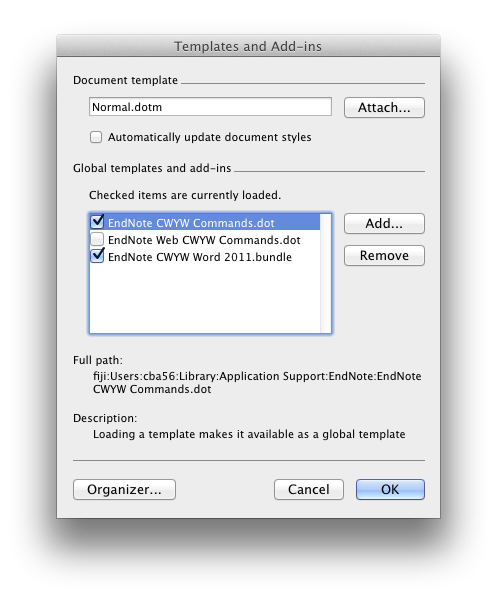

- How to show endnote toolbar in word mac how to#
- How to show endnote toolbar in word mac for mac#
- How to show endnote toolbar in word mac full#
- How to show endnote toolbar in word mac download#
- How to show endnote toolbar in word mac free#
Avid Technology subsidiary Pinnacle Systems has introduced its new Pinnacle TV for Mac HD mini Stick, a USB-based television tuner that can. Archiwalne: pinnacle tv for mac download. (Don’t click OK yet.ĭigital products Digital productsDigital products, Digital products Hybrid products Hybrid productsHybrid products, Hybrid products Mac products Mac. Click on New, and then enter a name for your toolbar.

A window appears that lets you create new toolbars and manage existing toolbars.

Choose View -> Toolbars -> Customize Toolbars And Menus. Step 2: Create a new toolbar The Customize Toolbars And Menus window lets you create new toolbars. The solution listed above baffles me – where is the file named ‘/Library/Application Support/Adobe/CS5.5ServiceManager’ that needs to be renamed to fix the problem? However, I can’t get Illustrator to work. Don’t worry you’ll be able to hide them later. This will add those toolbars at the top of the window, below the title bar, and above the ribbon. Step 1: Show and hide toolbars Use the View menu to hide or reveal toolbars.To start with, it’s a good idea to show the basic toolbars so you can access their buttons when you create your own toolbar. To do this, choose View -> Toolbars, and selected the Standard and Formatting ones, if they are not already checked. To insert a citation from within Word: From the menu bar, select Tools > EndNote X6 > Find Citation(s). You can either insert a citation from within Microsoft Word or from within EndNote. When you are ready to cite a source, position the cursor where you want to insert a citation. You can activate this toolbar by going to. This is the EndNote tool bar in Word 2011.
How to show endnote toolbar in word mac how to#
Here’s how to customize your Word 2011 toolbars to fit the way you work.Ĩ5. It can also be useful for toolbars to contain the commands you really use-some of which may be deeply buried in menus. With today’s widescreen monitors, it makes sense to have toolbars at the side of your main window, so you can see more of your text while you work. But the toolbars and ribbon are stacked at the top of the program’s windows, reducing your vertical space. If you work with, you may find the program’s toolbars and ribbon practical ways to access functions you use often, such as formatting, alignment, and highlighting.
How to show endnote toolbar in word mac free#
How to show endnote toolbar in word mac download#
How to show endnote toolbar in word mac full#
True, the program is full of obscure commands and functions that likely only get used by a very small percentage of people. Over the years, Microsoft Word has taken a lot of abuse. Finally, with the “Customize Toolbars and Menus” dialog box open, drag the Command that contained the icon you copied from off your Toolbar to delete it.


 0 kommentar(er)
0 kommentar(er)
